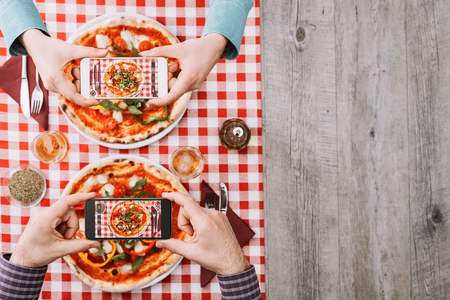1. Understanding the Indian Audience
When optimising food images for Indian food delivery apps, understanding the local audience is crucial for maximising customer engagement and boosting sales. Indian consumers are diverse in their culinary preferences, deeply influenced by regional cuisines, religious beliefs, and cultural celebrations. For instance, vegetarian dishes hold significant value due to the prevalence of vegetarianism across many communities, while specific festivals like Diwali or Ramadan influence food choices and presentation styles.
Visually, Indian customers are drawn to vibrant colours and generous portions that evoke a sense of abundance and warmth. Presentation should highlight freshness, rich gravies, aromatic spices, and garnish such as coriander leaves or lemon wedges—elements that signal authenticity and flavour. Regional diversity also plays a key role: North Indian consumers may expect butter naan paired with creamy curries, while South Indian users might look for crisp dosas with colourful chutneys. Understanding these nuanced expectations ensures your photos resonate emotionally and culturally with your target market.
2. Choosing the Right Dishes to Feature
When optimising food images for Indian food delivery apps, selecting the right dishes is a strategic decision. With Indias culinary diversity, its vital to showcase dishes that are not only visually appealing but also resonate with the local palate. Here are key tips to help you choose dishes that boost your menu’s appeal and drive orders across different regions.
Highlight Regional Favourites
Indias vast geography means tastes vary widely. Featuring regionally popular items increases your chances of connecting with local customers. For example, Butter Chicken is a hit in North India, while Masala Dosa is loved in the South. Consider the regional audience before choosing which dish photos to upload.
Leverage Bestselling Menu Items
Always prioritise your bestsellers. These are proven crowd-pleasers and likely to attract new customers. If your Biryani consistently sells well, make it a visual centrepiece in your online menu. Data-driven choices ensure you invest effort in promoting items that yield results.
Top Visually Appealing Indian Dishes by Region
| Region | Bestselling Dishes | Visual Appeal Factors |
|---|---|---|
| North India | Butter Chicken, Paneer Tikka, Chole Bhature | Creamy gravies, vibrant garnishes (coriander, onions), colourful breads |
| South India | Dosa, Idli-Sambar, Hyderabadi Biryani | Golden crisp textures, contrasting chutneys, aromatic rice layers |
| West India | Pav Bhaji, Vada Pav, Puran Poli | Bright sauces, fluffy buns or breads, festive plating styles |
| East India | Fish Curry, Momos, Rasgulla | Rich gravies, steamed elements, glossy desserts |
Cater to Diverse Indian Tastes
Your food photos should reflect vegetarian and non-vegetarian options, spicy and mild choices, as well as traditional and contemporary fusion plates. This inclusivity ensures wider appeal and encourages group orders—perfect for families and office lunches.
Data-Driven Dish Selection Tips:
- Analyse app sales reports to identify top-selling items.
- Monitor reviews and ratings for clues on customer favourites.
- Stay updated with seasonal trends (e.g., Mango desserts in summer).
Selecting the right dishes for your image gallery is about understanding both data and cultural preferences. By featuring bestselling or regionally beloved Indian dishes that look tempting on screen and connect emotionally with local diners, you maximise your online menu’s conversion potential.

3. Lighting and Colour: Vibrancy for Indian Cuisine
Indian cuisine is celebrated for its vibrant colours and rich textures, making food photography an essential element in driving orders on delivery apps. To ensure your dishes look irresistible on mobile screens, mastering lighting and colour techniques is crucial.
Harnessing Natural Light for Authentic Appeal
Whenever possible, use natural daylight to capture food photos. Soft, diffused sunlight from a window brings out the true hues of curries, biryanis, or tandoori items without harsh shadows. Morning or late afternoon light works best. Avoid using your phone’s flash as it can distort colours and create unappetising reflections.
Emphasising Colour Contrast
Indian dishes often feature contrasting shades—think of a bright green coriander chutney beside a golden-brown samosa or the fiery red of chicken tikka against creamy white raita. Arrange dishes so these contrasts are visible, making each component stand out. Use simple backgrounds like plain wooden tables or banana leaves to further enhance vibrancy without distracting from the food.
Highlighting Textures for Temptation
Close-up shots can showcase the distinct textures that make Indian food unique—the crispy crust of pakoras, the velvety smoothness of paneer butter masala, or the fluffy grains of basmati rice. Experiment with angles: a 45-degree shot often highlights both colour and texture best for mobile screens.
Colour Correction and Enhancement Tools
Don’t hesitate to use basic editing tools available on your smartphone or favourite app. Adjust brightness, contrast, and saturation just enough to reflect how the dish looks in real life—overediting can make food appear unnatural. Aim for warm tones; they evoke freshness and richness typical of Indian meals.
Cultural Nuances in Presentation
For an authentic touch that resonates with Indian audiences, include familiar garnishes like fresh coriander sprigs, sliced onions, or a wedge of lime. These not only add pops of colour but also increase perceived freshness and flavour, enticing users to place an order through your delivery app.
Essentials of Image Size and Format for Indian Platforms
When uploading food photos to Indian food delivery apps such as Swiggy, Zomato, or Dunzo, optimising image size and format is critical. Fast loading times and crisp visuals not only enhance user experience but also directly influence conversion rates. Indian users often access these platforms via mobile devices on varying internet speeds, making efficient image optimisation a must.
Best Practices for Compressing Food Photos
To ensure your mouth-watering dishes look perfect without slowing down app performance:
- Use Lossless Compression: Tools like TinyPNG or ImageOptim help reduce file size while maintaining quality—essential for vibrant curries and rich gravies that need detail.
- Balance Quality and Speed: Keep file sizes under 500 KB for main images; thumbnails should be below 100 KB.
- Avoid Over-Compression: Excessive compression can make biryanis or dosas appear dull and unappetising. Always preview images before uploading.
Recommended Image Formats for Indian Apps
| Image Type | Recommended Format | Why? |
|---|---|---|
| Main Menu Photos | JPEG | Best balance of size and colour depth; widely supported. |
| Dishes with Transparency (e.g., overlays) | PNG | Keeps transparency intact, ideal for logos or special offers. |
| Banners & Promotions | WebP | Modern format with high compression and quality retention; great for fast loading. |
Resizing Tips for Different Device Screens
Indian users access food delivery apps from a diverse range of smartphones. Ensure images are responsive by preparing multiple sizes:
- Main Listing: 800×600 px (for prominent display)
- Thumbnail: 400×300 px (for quick previews)
- Banners: 1200×400 px (for offers or combos)
Cultural Note: Highlighting Indian Dishes Effectively
Curry textures, tandoori char, and colourful chutneys are visual selling points—make sure resizing doesn’t blur these details. Always test uploads on both Android and iOS versions of popular Indian apps to ensure consistency in appearance across devices.
5. Highlighting Local Authenticity and Festive Touches
Standing out on Indian food delivery apps requires more than just high-resolution images — it’s about connecting with local sentiments. Incorporating elements that reflect Indian culture, festivals, and everyday dining rituals instantly makes your food photos relatable and inviting for Indian users.
Utilise Traditional Utensils and Serveware
Swap generic plates for locally recognised utensils such as copper thalis, clay kulhads, or brass bowls. These not only evoke nostalgia but also highlight the authentic experience of enjoying Indian cuisine. For instance, presenting biryani in a handi or chai in a cutting glass gives an instant cultural cue, increasing the photo’s appeal and engagement rate.
Showcase Iconic Textiles as Backdrops
Use vibrant Indian fabrics like block-printed tablecloths, ikat napkins, or colourful dupattas as backgrounds to add depth and authenticity. These textiles bring a touch of tradition and visual warmth that strongly resonates with Indian audiences across cities and regions.
Add Festive Elements According to Season
Leverage the festival calendar by integrating symbolic decor into your imagery. During Diwali, add diyas or marigold garlands; for Holi, sprinkle some colours or show mithai platters. Even simple touches like banana leaves during Onam or earthen lamps during Durga Puja can create a powerful seasonal connection that drives orders during peak times.
Strategic Application: Blend Tradition with Modern Presentation
While authenticity is key, ensure your presentation remains visually clean and appetising. A modern plating style combined with traditional props (like a dosa on a banana leaf served with stainless steel katoris) strikes the perfect balance, appealing to both urban millennials and family audiences looking for a taste of home.
By thoughtfully weaving local utensils, textiles, and festive cues into your food photography strategy, you can make your listings stand out on crowded platforms like Swiggy or Zomato—ultimately driving better click-through rates and conversions with imagery that feels familiar yet aspirational.
6. Ensuring Consistency Across Regional Menus
Strategies for Maintaining a Uniform Look Across India
India’s food delivery market is incredibly diverse, with each region boasting its own culinary identity and presentation style. However, when optimising images for food delivery apps, consistency is key to building brand trust and recall—without disregarding the uniqueness of local cuisine.
Standardised Guidelines With Regional Flexibility
Create an image style guide that outlines core visual elements: lighting, angle (such as 45-degree or top-down shots), background colour, and plating standards. While these should apply across all menus, allow flexibility for regional presentation—for instance, using banana leaves in South Indian dishes or thalis for North Indian meals. This strikes a balance between uniformity and authentic representation.
Centralised Photo Editing and Quality Checks
Deploy centralised editing tools or teams to ensure all uploaded images meet your platform’s quality benchmarks—brightness, resolution (minimum 1080x1080px), and clarity. Use batch processing software to apply consistent filters or white balance settings while preserving essential local details like traditional utensils or garnish styles.
Regional Training for Photographers and Restaurant Partners
Conduct workshops and provide resource materials tailored for different regions in India—explaining both the technical requirements and how to highlight local authenticity within those parameters. Encourage restaurant partners to showcase their signature serving methods but within agreed image dimensions and composition rules.
Data-Driven Visual Optimisation
Regularly analyse user engagement data segmented by region to identify which photo styles boost click-through rates or conversions for specific cuisines (e.g., vibrant colours for Punjabi food vs. minimalist compositions for Kerala fare). Refine your guidelines based on what works best locally while still maintaining a cohesive overall look.
Showcasing Diversity Without Compromising Brand Identity
Celebrate India’s culinary diversity by featuring regional menu sections with slightly varied photo aesthetics—but always anchored by a recognisable brand element, such as a logo watermark or a signature background colour. This reassures users of reliability while respecting their local tastes.
By applying these strategies, food delivery platforms can present tempting, high-quality food images that resonate pan-India—driving higher engagement without sacrificing regional authenticity or brand consistency.


